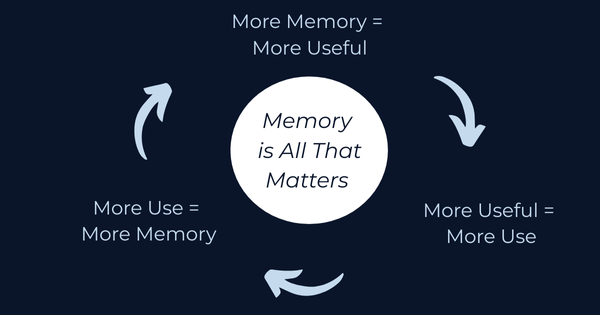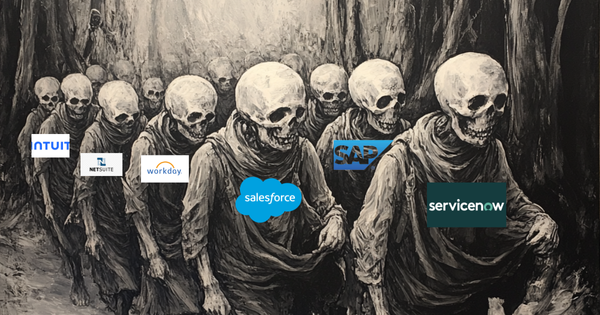Building My Digital Brain: Part 1
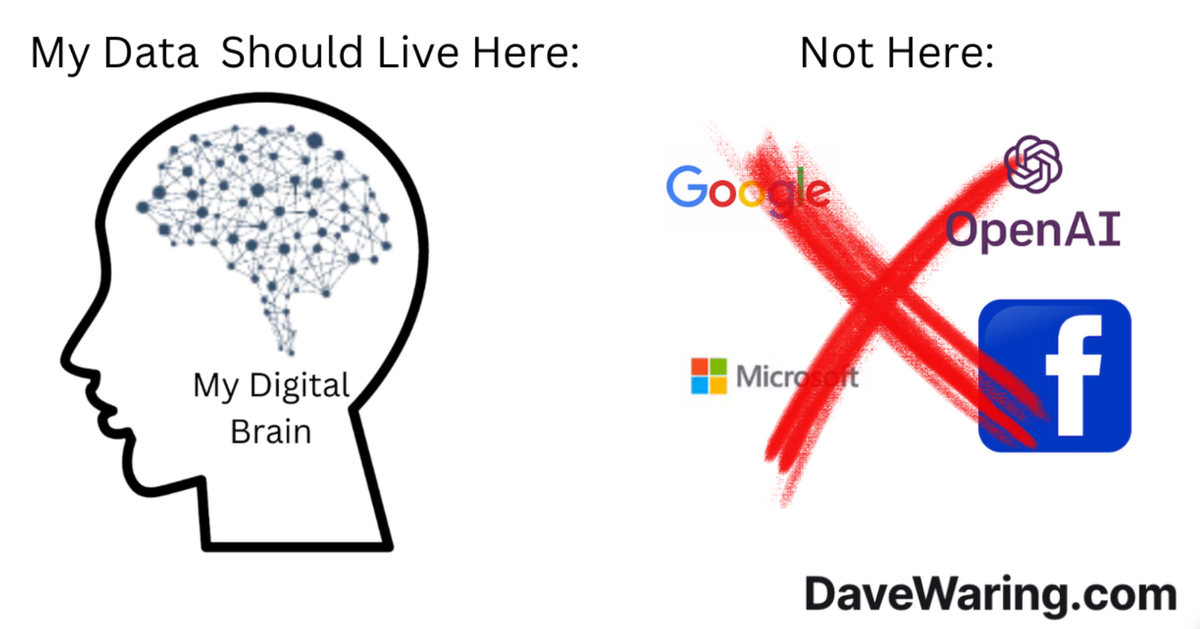
This is the first in a series where I share my journey towards building my own digital brain.
In this article, I'll cover:
- What a digital brain is
- Why I want to own my digital brain
- How I plan to use it
- The components of a digital brain
Let’s get started:
What’s a digital brain?
A digital brain is an AI-powered system for storing, managing, and harnessing digital data and knowledge.
OpenAI’s ChatGPT, Google’s Gemini, and Microsoft’s Copilot are all examples of corporate owned digital brains.
These are powerful tools, but there is an issue.
I don’t own these digital brains, the companies that created them do.
Why I want to own my digital brain
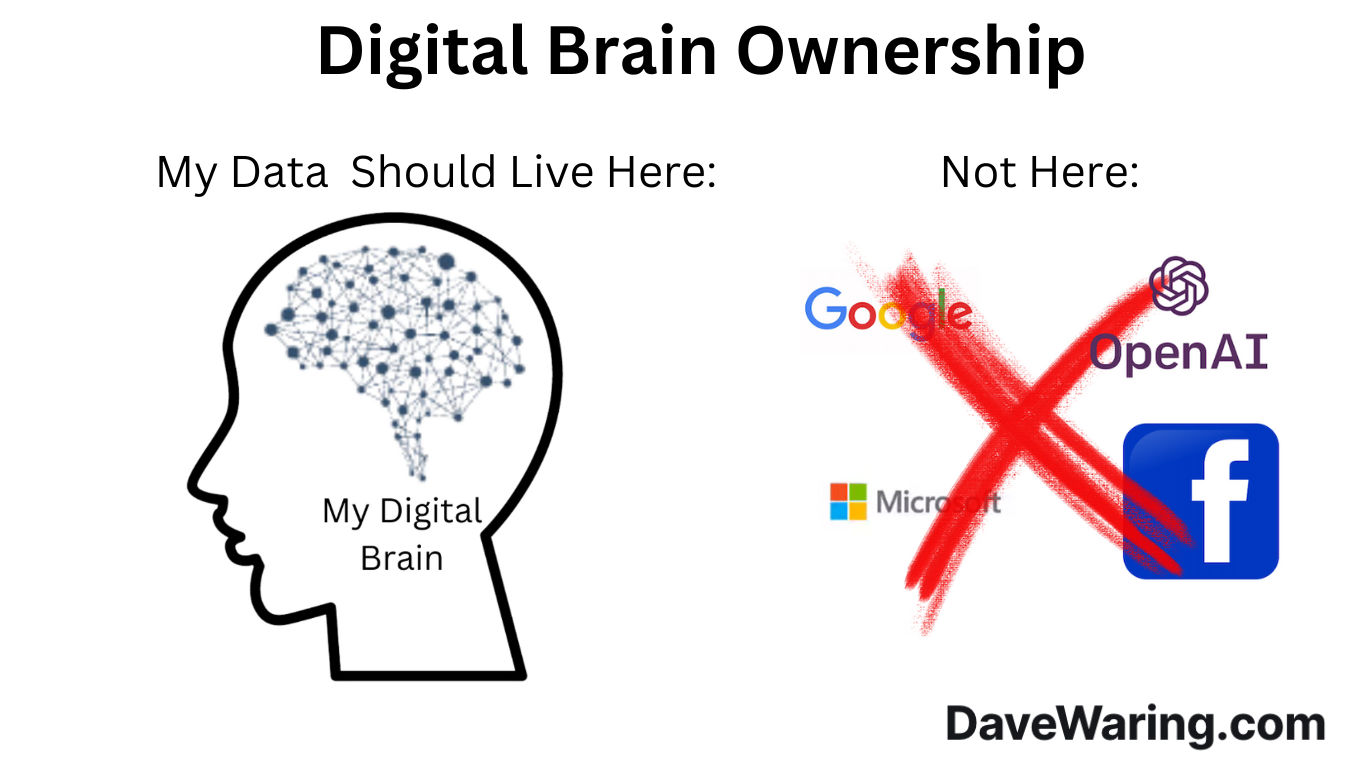
I don’t want a company owning my physical brain.
And I don’t want a company owning my digital brain either.
How I plan on using my digital brain
I plan to use my digital brain as a personalized expert on all areas of my life.
This includes:
Productivity - Managing to-do lists and offering advice on task completion and efficiency.
Physical Health - Tracking and analyzing food diaries, bloodwork, and fitness data to provide health advice and alerts.
Mental Health - Tracking daily moods and suggesting ways to improve mental wellbeing.
Personal Finances - Reviewing credit card, bank, and brokerage statements and offering budgeting and investment advice.
Work - I’ll give it access to my email and other work information so it can act as my personal executive assistant.
Relationships - I’ll tell my digital brain about all my relationships and ask for advice on how I can improve.
To provide the best advice, my digital brain needs access to my most personal information.
This is another reason why I want to own my digital brain...
I don't want to give away all my private information to a company.
Initial Learnings
The technology needed to build my own digital brain seems to be available…
And it’s available at a relatively low cost.
But putting the technology together is complicated for a non-developer like me.
So I’ve contracted with developers to help understand the different components of setting up my digital brain.
And how I might go about creating, controlling, and benefiting from my own digital brain.
Here is what I’ve learned so far:
Components of a Digital Brain
After researching how to create my own digital brain, I've identified four primary components:
- Storage: A database to store both structured (e.g., credit card statements) and unstructured data (e.g., meeting notes). It must support vector storage for AI compatibility.
- Retrieval: An interface for inputting and receiving information, plus an application to store and locate data correctly. I want to connect this to both my personal database and external sources like Google search.
- Intelligence: The ability to integrate various AI models, both general and specialized, to enhance the brain's capabilities.
- Hosting: A secure place for all components to operate, similar to website hosting.
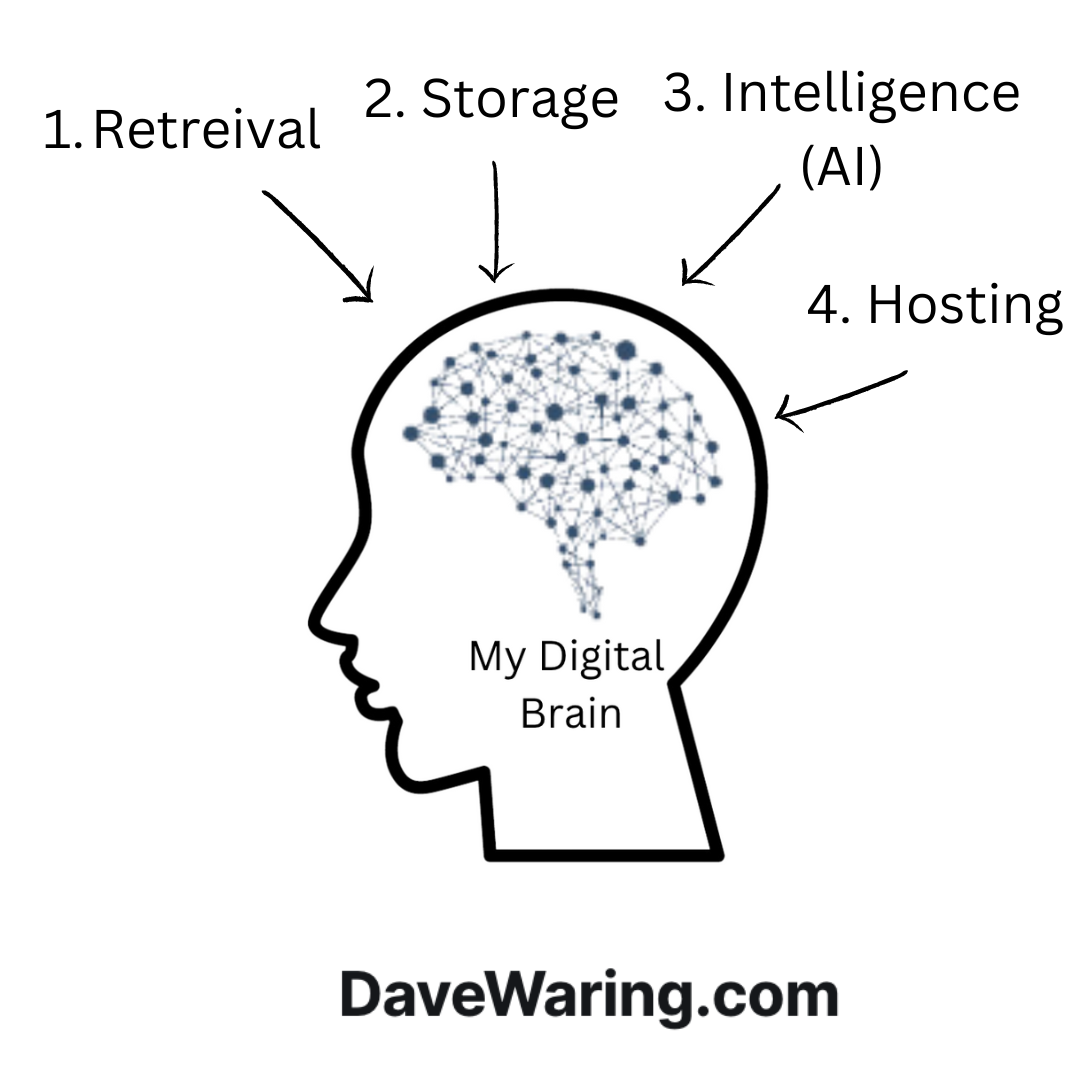
So the keys to creating, controlling, and benefiting from my own digital brain are:
- The ability to setup and connect each of these components.
- Ensuring that I remain in control of each of these components instead of ceding that control to Big Tech companies.
How that works is the topic of part 2 of this series —> Digital Brain Ownership & Control
Have comments or questions on what I’ve written above?
See something I missed or got incorrect?
Please let me know in the comments section below.
Thanks for reading!
Dave
P.S. I'm building a community for people that want to create, control, and benefit from their own digital brain.
I'd love it if you'd join me.
You can do so for free at DigitalBrainBase.com.



